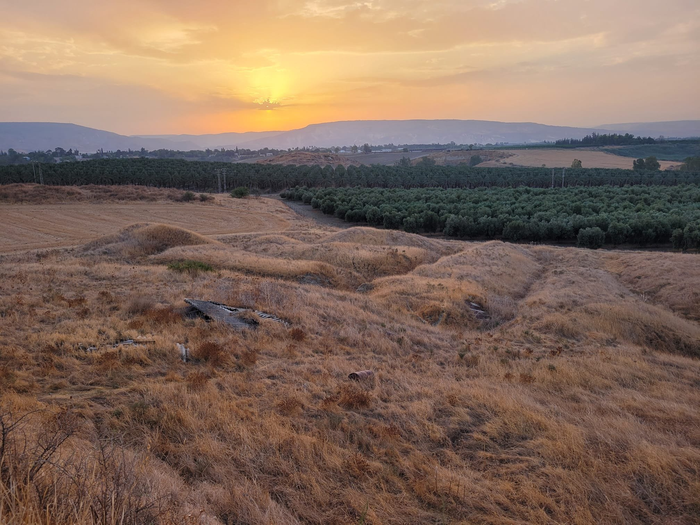When the first members of our species ventured out of Africa, they walked into a world that earlier hominins, such as Homo erectus, had first explored a million years earlier. According to a recent study of a 1.5 million-year-old vertebra, those earlier hominins may have expanded beyond Africa in several waves—each following different environments and equipped for different ways of life.
Taking a second look
Anthropologists found a single vertebra from the lower back of a hominin child who died 1.5 million years ago. Mixed with the fossilized bones of hippos, mammoths, giraffes, saber-toothed tigers, and warthogs, the bone had sat among the remains of Pleistocene fauna since the 1966 excavation that unearthed it. But when University of Tulsa anthropologist Miriam Belmaker, a co-author on the recent study, looked through the animal fossils as part of another recent study (an effort to narrow down the age of the site), she recognized the vertebra as belonging to a member of our genus, Homo.
And the fact that the pieces of the vertebra hadn’t all fused together into a single hard, bony piece meant that it came from a child who hadn’t yet finished growing and maturing. They were probably somewhere between 6 and 11 years old when they died.
This child had lived during an important moment for human evolution. Between 1.9 and 1.1 million years ago, some of the earliest members of our genus began to expand into Europe and Asia for the first time. Our species repeated a similar journey out of Africa about a million years later, but much earlier hominins did it first.
The owner of the 'Ubeidya vertebra almost certainly didn’t think of her life in those terms. The venture out of Africa wasn’t a deliberate march into the unknown, just a gradual expansion into a little bit of new territory each season. In what’s now the Jordan Valley, these early hominins lived in a warm, humid woodland. They shared the landscape with classic Pleistocene species like mammoths, saber-toothed tigers, and giant buffalo, along with animals like baboons, hippos, jaguars, and warthogs. To prepare their food, they used a style of stone tools that archaeologists call Acheulean.
Other styles
Farther north, at Dmanisi Cave in what’s now Georgia, other hominins lived in a drier, open grassland and used a type of stone tool technology now known as Olduwan. The fact that groups of hominins in different parts of Eurasia used different collections of tools, according to some paleoanthropologists, suggests that hominins left Africa in several separate waves. Each wave brought different cultural adaptations—including stone tools—with them.
However, Bar-Ilan University anthropologist Alon Barash and his colleagues say the vertebra suggests those waves of migrants may have been not just different cultural groups, but members of more than one hominin species, each even more different from the other than we were from the Neanderthals or Denisovans. That’s because, based on what the 'Ubeidya vertebra suggests about the size and growth rate of its former owner, the child seems to have developed at a different pace than the hominins at Dmanisi.
If you want to draw conclusions about a long-dead person’s stature, a single vertebra isn’t much to go on. Most of the time, anthropologists use the long bones of the arm and leg for height estimates. But when the only bone you have is a lumbar vertebra, you consult the applicable set of tables and formulas, and you make do with an estimate.
Barash and his colleagues estimated that the child at 'Ubeidya probably stood about 155 centimeters tall. That’s the average height for a 13-year-old boy or a 12.5-year-old girl in the modern US. If the child was between 6 and 11 years old when they died, as the unfused parts of the vertebra suggest, then they were pretty tall for their age. As an adult, this person probably would have stood somewhere around 198 centimeters tall—about 20 centimeters taller than the average American today.
That means that not only did the hominins living in the Jordan Valley 1.5 million years ago use different tools to survive in a different environment than those at Dmanisi, but the two groups were very different in size. It might be reasonable to call them different species.
At this height, the child at 'Ubeidya must have been one of what Barash and his colleagues call the large-bodied hominins: something like Homo erectus, which had evolved modern human limb proportions and stature by around 2 million years ago. It’s hard to say exactly which species 'Ubeidya belonged to, however.



3175x175(CURRENT).thumb.jpg.b05acc060982b36f5891ba728e6d953c.jpg)

Recommended Comments
There are no comments to display.
Join the conversation
You can post now and register later. If you have an account, sign in now to post with your account.
Note: Your post will require moderator approval before it will be visible.